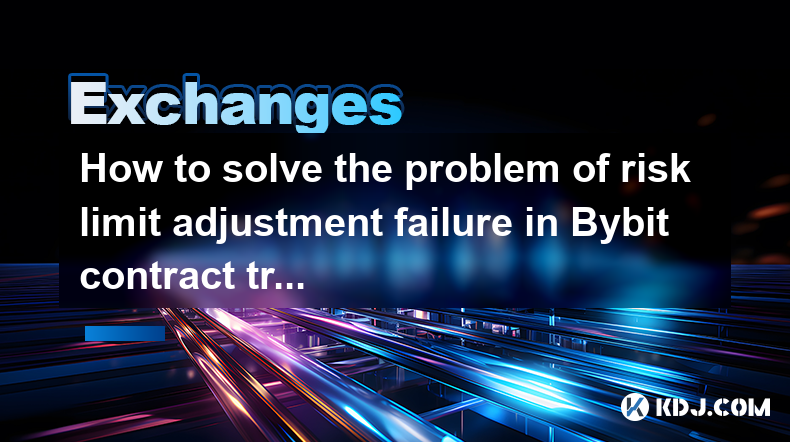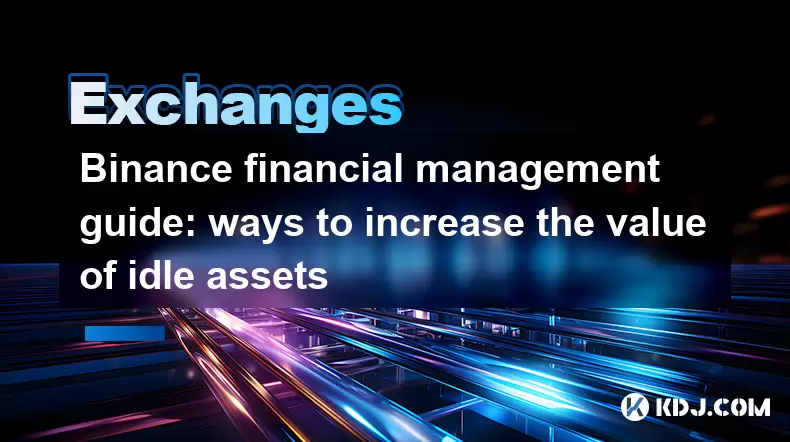-
 Bitcoin
Bitcoin $107,352.1067
0.28% -
 Ethereum
Ethereum $2,429.3531
-0.90% -
 Tether USDt
Tether USDt $1.0001
-0.02% -
 XRP
XRP $2.1894
4.62% -
 BNB
BNB $646.7968
0.36% -
 Solana
Solana $147.4290
4.03% -
 USDC
USDC $0.9998
-0.02% -
 TRON
TRON $0.2756
1.52% -
 Dogecoin
Dogecoin $0.1630
1.14% -
 Cardano
Cardano $0.5612
1.18% -
 Hyperliquid
Hyperliquid $37.0580
-0.05% -
 Bitcoin Cash
Bitcoin Cash $496.9410
-0.09% -
 Sui
Sui $2.7318
3.19% -
 Chainlink
Chainlink $13.1503
0.58% -
 UNUS SED LEO
UNUS SED LEO $9.0766
0.55% -
 Avalanche
Avalanche $17.7220
1.46% -
 Stellar
Stellar $0.2380
1.52% -
 Toncoin
Toncoin $2.8439
0.38% -
 Shiba Inu
Shiba Inu $0.0...01143
1.84% -
 Litecoin
Litecoin $85.8053
1.47% -
 Hedera
Hedera $0.1483
2.70% -
 Monero
Monero $314.3240
2.12% -
 Bitget Token
Bitget Token $4.6725
0.77% -
 Dai
Dai $1.0000
0.00% -
 Polkadot
Polkadot $3.3555
1.28% -
 Ethena USDe
Ethena USDe $1.0001
0.02% -
 Uniswap
Uniswap $7.0890
2.64% -
 Pi
Pi $0.5355
-3.40% -
 Pepe
Pepe $0.0...09393
1.06% -
 Aave
Aave $256.8136
-1.90%
How to solve the problem of risk limit adjustment failure in Bybit contract trading?
Insufficient funds, system glitches, or open positions can cause Bybit risk limit adjustment failures; check your balance and internet, or contact support for help.
Apr 01, 2025 at 03:00 pm

Understanding Bybit's Risk Limit System
Bybit, like other cryptocurrency exchanges offering contract trading, employs a risk limit system to protect both the trader and the exchange from significant financial losses. This system dynamically adjusts based on your trading activity, account balance, and market volatility. A risk limit adjustment failure means you're unable to modify your pre-set risk limits, hindering your ability to manage your trading exposure. This can be frustrating, especially during volatile market conditions. Understanding the reasons behind this failure is the first step towards resolving it.
Common Causes of Risk Limit Adjustment Failure
Several factors can contribute to the inability to adjust your risk limits on Bybit. One common reason is insufficient funds in your account. The system might prevent adjustments if your available margin is too low to support the desired changes. Another reason could be a temporary system glitch or maintenance on the Bybit platform. Network connectivity issues on your end can also prevent successful communication with the Bybit servers, leading to adjustment failures. Finally, pending orders or open positions might interfere with the adjustment process.
Troubleshooting Steps for Risk Limit Adjustment Failure
If you encounter problems adjusting your risk limits, try these troubleshooting steps:
Check your account balance: Ensure you have sufficient funds to support the desired risk limit changes. Insufficient margin is a frequent cause of adjustment failure. Remember to account for any open positions and pending orders when assessing your available margin.
Verify your internet connection: A stable internet connection is crucial for seamless communication with the Bybit platform. Try restarting your router or switching to a different network.
Close open positions and cancel pending orders: Outstanding positions and pending orders can sometimes interfere with risk limit adjustments. Closing them might resolve the issue. Be aware of potential liquidation risks when closing positions.
Check the Bybit status page: Bybit often posts updates regarding system maintenance or outages on their status page. Check this page to see if any scheduled or unscheduled maintenance might be affecting your ability to adjust risk limits.
Refresh the page and try again: Sometimes, a simple page refresh can resolve temporary glitches preventing the adjustment. Try clearing your browser's cache and cookies as well.
Contact Bybit support: If none of the above steps work, contact Bybit's customer support. Provide them with detailed information about the error message you're receiving and any relevant screenshots. Be patient and provide all necessary information for efficient support.
Understanding Margin Levels and Their Impact
The concept of margin levels is crucial in understanding risk limits. Your margin level represents the ratio of your equity to your required margin. A lower margin level indicates a higher risk of liquidation. Adjusting your risk limits often involves changing your margin requirements. Maintaining a healthy margin level is vital to prevent liquidation. Understanding how your trading actions affect your margin level is key to preventing adjustment failures and managing risk effectively.
The Role of Leverage in Risk Limit Adjustments
Leverage significantly magnifies both profits and losses. Higher leverage increases your potential gains but also exponentially increases your risk of liquidation. When adjusting risk limits, consider your leverage level. Using high leverage with insufficient margin can easily lead to risk limit adjustment failures and potential liquidation. Lowering your leverage can provide more flexibility in adjusting your risk limits.
Advanced Risk Management Techniques
Beyond simply adjusting risk limits, employing advanced risk management strategies is crucial for successful contract trading. This includes setting stop-loss orders to limit potential losses, diversifying your portfolio across different assets, and adhering to a strict trading plan. Proper risk management is essential to long-term success in cryptocurrency contract trading. It's not just about setting limits; it's about understanding your risk tolerance and acting accordingly.
The Importance of Regular Monitoring
Regularly monitoring your account, margin levels, and open positions is crucial. This proactive approach allows you to identify potential problems early and make timely adjustments to your risk limits. Don't wait until the last minute to adjust your risk limits; regularly review your positions and make necessary changes. Ignoring your account can lead to unexpected liquidation.
Understanding Bybit's User Interface
Familiarity with Bybit's user interface is essential. Knowing where to locate your risk limit settings and understanding the information displayed will help you efficiently manage your risk. Take the time to familiarize yourself with the platform's interface and features. This will prevent confusion and potential errors when adjusting your risk limits.
Frequently Asked Questions
Q: What should I do if I consistently experience risk limit adjustment failures?
A: If you consistently face this issue, contact Bybit support immediately. They can investigate potential account-specific problems or technical glitches.
Q: Can I adjust my risk limits during active trading?
A: While possible, it's generally recommended to adjust risk limits when you have fewer open positions to avoid complications.
Q: What happens if my risk limit adjustment request is rejected?
A: The platform will usually provide an error message explaining the reason for the rejection. Check your account balance, open positions, and internet connection.
Q: Are there any fees associated with adjusting risk limits?
A: No, adjusting risk limits on Bybit is typically free of charge.
Q: How often should I review and adjust my risk limits?
A: Regularly review and adjust your risk limits, at least daily, or more frequently during volatile market conditions.
Disclaimer:info@kdj.com
The information provided is not trading advice. kdj.com does not assume any responsibility for any investments made based on the information provided in this article. Cryptocurrencies are highly volatile and it is highly recommended that you invest with caution after thorough research!
If you believe that the content used on this website infringes your copyright, please contact us immediately (info@kdj.com) and we will delete it promptly.
- RUVI Token Soars: Can It Eclipse Cardano's Forecast?
- 2025-06-29 02:30:12
- Meme Coin Mania: Can Little Pepe Outshine Shiba Inu and Dogecoin?
- 2025-06-29 02:30:12
- XRP Tokens: Navigating Financial Status and the Art of Buying In
- 2025-06-29 02:50:12
- Transparent Fees, Trading Power, No Surprises: LeveX's Honest Approach
- 2025-06-29 02:50:12
- DAO Price, Total Value Locked, and All-Time Highs: What's Driving the DeFi Surge?
- 2025-06-29 03:21:18
- BlockDAG, Polygon, Render, and Polkadot: Navigating the Altcoin Landscape in NYC Style
- 2025-06-29 03:21:18
Related knowledge

Binance spot market analysis: seize the best time to buy and sell
Jun 19,2025 at 04:56pm
Understanding the Binance Spot MarketThe Binance spot market is one of the most popular platforms for cryptocurrency trading globally. It allows users to trade digital assets at current market prices, making it essential for traders aiming to buy low and sell high. Unlike futures or margin trading, spot trading involves direct ownership of the asset aft...

Binance fund management secrets: reasonable allocation to increase income
Jun 22,2025 at 02:29pm
Understanding Binance Fund ManagementBinance fund management involves strategic allocation of your cryptocurrency assets to optimize returns while managing risk. The key to successful fund management lies in understanding how different investment options on the Binance platform can be utilized to create a diversified portfolio. This includes spot tradin...

Binance trading pair selection skills: find the best buying and selling combination
Jun 23,2025 at 02:49am
Understanding the Basics of Trading Pairs on BinanceBefore diving into trading pair selection skills, it's essential to understand what a trading pair is. On Binance, a trading pair refers to two cryptocurrencies that can be traded against each other. For example, BTC/USDT means Bitcoin is being traded against Tether. Each trading pair has its own liqui...

Binance new coin mining strategy: participate in Launchpool to earn income
Jun 23,2025 at 11:56am
What is Binance Launchpool and how does it work?Binance Launchpool is a feature introduced by the world’s largest cryptocurrency exchange, Binance, to allow users to earn new tokens through staking. This platform enables users to stake their existing cryptocurrencies (such as BNB, BUSD, or other supported assets) in exchange for newly launched tokens. T...

Binance financial management guide: ways to increase the value of idle assets
Jun 19,2025 at 11:22pm
Understanding Idle Assets in the Cryptocurrency SpaceIn the fast-paced world of cryptocurrency, idle assets refer to digital currencies that are not actively being used for trading, staking, or yield farming. Holding these funds in a wallet without utilizing them means missing out on potential growth opportunities. Binance, as one of the leading platfor...

Binance flash exchange function guide: quick exchange of digital currencies
Jun 23,2025 at 12:29pm
What is the Binance Flash Exchange Function?The Binance Flash Exchange function is a powerful tool designed to allow users to instantly swap between supported cryptocurrencies without the need for placing traditional buy/sell orders. This feature simplifies the trading process by offering a direct exchange mechanism, eliminating the requirement to conve...

Binance spot market analysis: seize the best time to buy and sell
Jun 19,2025 at 04:56pm
Understanding the Binance Spot MarketThe Binance spot market is one of the most popular platforms for cryptocurrency trading globally. It allows users to trade digital assets at current market prices, making it essential for traders aiming to buy low and sell high. Unlike futures or margin trading, spot trading involves direct ownership of the asset aft...

Binance fund management secrets: reasonable allocation to increase income
Jun 22,2025 at 02:29pm
Understanding Binance Fund ManagementBinance fund management involves strategic allocation of your cryptocurrency assets to optimize returns while managing risk. The key to successful fund management lies in understanding how different investment options on the Binance platform can be utilized to create a diversified portfolio. This includes spot tradin...

Binance trading pair selection skills: find the best buying and selling combination
Jun 23,2025 at 02:49am
Understanding the Basics of Trading Pairs on BinanceBefore diving into trading pair selection skills, it's essential to understand what a trading pair is. On Binance, a trading pair refers to two cryptocurrencies that can be traded against each other. For example, BTC/USDT means Bitcoin is being traded against Tether. Each trading pair has its own liqui...

Binance new coin mining strategy: participate in Launchpool to earn income
Jun 23,2025 at 11:56am
What is Binance Launchpool and how does it work?Binance Launchpool is a feature introduced by the world’s largest cryptocurrency exchange, Binance, to allow users to earn new tokens through staking. This platform enables users to stake their existing cryptocurrencies (such as BNB, BUSD, or other supported assets) in exchange for newly launched tokens. T...

Binance financial management guide: ways to increase the value of idle assets
Jun 19,2025 at 11:22pm
Understanding Idle Assets in the Cryptocurrency SpaceIn the fast-paced world of cryptocurrency, idle assets refer to digital currencies that are not actively being used for trading, staking, or yield farming. Holding these funds in a wallet without utilizing them means missing out on potential growth opportunities. Binance, as one of the leading platfor...

Binance flash exchange function guide: quick exchange of digital currencies
Jun 23,2025 at 12:29pm
What is the Binance Flash Exchange Function?The Binance Flash Exchange function is a powerful tool designed to allow users to instantly swap between supported cryptocurrencies without the need for placing traditional buy/sell orders. This feature simplifies the trading process by offering a direct exchange mechanism, eliminating the requirement to conve...
See all articles

























































































